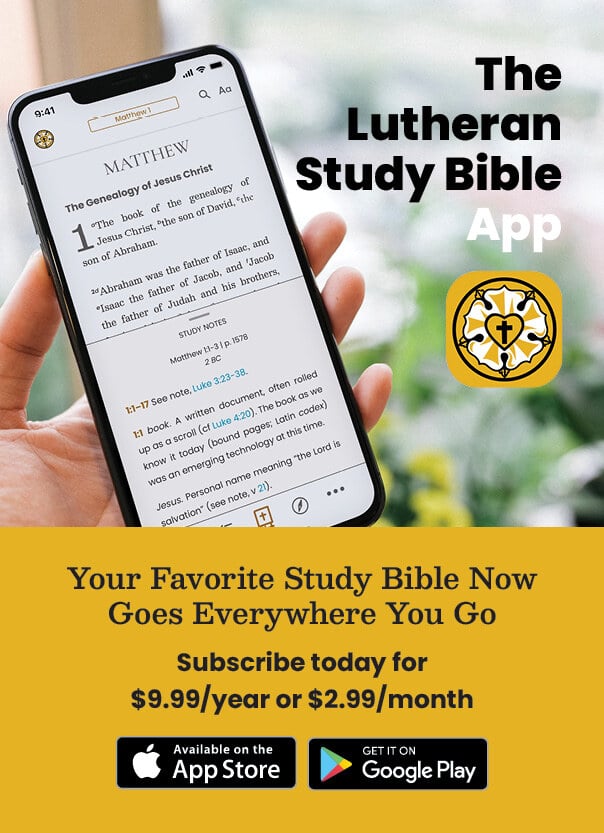Teaching Parables: A House Divided
Jesus frequently performed miracles in the course of His earthly ministry. Mark 3 contains a couple examples of note. Jesus was near the synagogue on the Sabbath. Our Lord’s detractors were keeping a close vigil in hopes of catching Jesus in sin. Jesus taught with authority in the synagogue, yet He was often rejected by the Jewish religious authorities. Jesus healed many, including the man with the withered hand, and when evil spirits encountered Him, they cowered in fear. The scribes claimed He was possessed by a demon. Even our Lord’s family believed He was deranged.
In this context, accused of devilry, our Savior cleverly presents the parable of the house divided.
Engaging Your Congregation in Sunday School
You see members of your congregation regularly attending worship and being active within their small groups and social circles, but are they thinking of or active with the children growing in Jesus’ love during Sunday School? Does it even matter? Shouldn’t the parents be involved with their children and not have to “bother” the congregation members? Of course, parents should be involved with their child’s faith, but it is also important to have your congregation members engaged as well. It can help parents feel connected to the church community, strengthen relationships across generations, and, most important, help students grow in their faith (and many times, the members as well!).
So now what? How do you start engaging your members with your Sunday School? The following are a few ideas to help involve your congregation with Sunday School.
Teaching Parables: The Faithful Servant
This parable is both Law and Gospel. It’s an admonition to be ready for Jesus’ return at the end of human history, but it is also the Gospel message that Jesus makes us ready for His triumphant return—the day He will make us whole in heaven.
How to Engage Parents with Your Sunday School
As you say goodbye to your students and watch them walk down the hall, hand in hand with their parents, do you ever wonder: Are they discussing the Bible with their kids? Are the lessons I am teaching being reinforced at home? Am I engaging my students’ parents enough?
Teaching Parables: The Wedding Feast and the Great Banquet
In polite society, we are raised with table manners: don’t hum or sing, keep your elbows off the table, place your napkin in your lap, don’t burp aloud (although this is allowed in some cultures as a compliment to the chef), don’t reach over another person’s plate. There are rules for seating at a dinner party as well, and Jesus makes reference to these in this month’s parables of the wedding feast and the great banquet.
Teaching Preschoolers God’s Truth about Hard Issues
Preschoolers often have big questions. To them, their questions aren’t so big. As they encounter new experiences that range from scraping a knee to a death in the family, they are simply trying to make sense of the world around them. However, to the adult of whom the question is asked, who has more life experience and understanding, the answer may seem very complicated. So, we wonder: How in the world am I going to explain this?
Teaching Parables: The Rich Fool
There is a beguiling temptation to read Jesus’ parable of the rich man’s meditation as nothing more than an admonition against wealth: “Flee from the comforts of this life, for death is coming, and cometh soon!” Instead, the Holy Spirit leads our weary souls to a something more profound: a Gospel-oriented meaning where we find freedom from fear and the peace of Christ.
Teaching Parables: Teaching the Rich Man and Lazarus
This parable teaches the importance of viewing others as people who Jesus loves and wants to save, through the work of the Holy Spirit. It warns against valuing property above people. Interestingly, however, a great deal of what this parable has to offer Sunday School teachers is what it doesn’t teach. We’ll explore the central meaning of the parable in more detail, as well as the theological pitfalls and how to avoid them.
Teaching Parables: The Laborers in the Vineyard
The parable of the laborers in the vineyard may at first seem obscure. There are multiple layers; but this fact makes the parable all the more useful for teaching in the Sunday School classroom and beyond. As you prepare to present this parable in the classroom, keep in mind that Jesus is on His way to the cross. He wants His hearers to understand that salvation and the Church—that is, the Body of all Christians in heaven and earth—is founded on the forgiveness of sins, which He will provide at Calvary. What’s more, Jesus engages the rich young man in Matthew 19 who asks, “Teacher, what good deed must I do to have eternal life?” (v. 16).
Teaching Parables: The Wedding Garment
While Jesus’ parable of the wedding garment is relatively brief, it presents two fundamental teachings of the Christian faith: God’s definitions of “good” and “bad” are vastly different from our own, and there is salvation only by grace through faith in Christ. I’ll include a few thoughts on Law and Gospel, some ideas for presenting this parable, and couple of song suggestions.





















